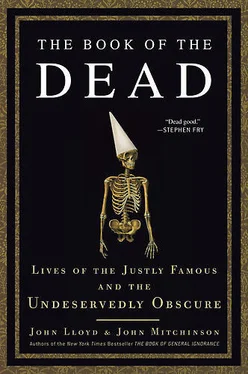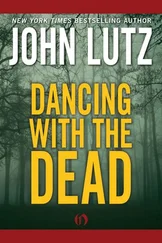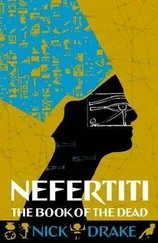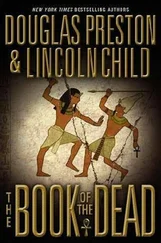Her own marriage confirmed Ann’s worst suspicions. She had avoided it until she was twenty-six, when her father forced her to marry one of his employees, Abraham Standerin, a junior blacksmith. He was also illiterate and the couple each signed their marriage certificate with a cross. Ann and Abraham would go on to have eight children in quick succession, though four of them were stillborn and none made it past the age of six.
In the meantime, Ann had joined a fledgling religious sect called the Wardley Society. Started by James and Jane Wardley, two married tailors from Bolton, it was colloquially known as the Shaking Quakers (or Shakers for short). The Wardleys had developed the belief that the soul could be purified of its lusts only by the action of the Holy Spirit, which manifested itself by violently shaking the physical body of the sinner. The greater the sin, the more extreme the shaking—and thus the more noise produced in the supplicant. As a result, Shaker meetings were deafening: They could sometimes be heard several miles away:
One will fall prostrate on the floor, another on his knees and his head on his hands, on the floor; another will be muttering articulate sounds which neither they nor any body else can understand… others will be shooing and hissing evil spirits out of the house; all in different tunes, groaning, jumping, dancing, drumming, singing, laughing, talking and stuttering, shooing and hissing makes a perfect bedlam; this they call the worship.
Ann’s reports of her visions entranced the group, and the moral leadership of the sect passed to her from the Wardleys. To be a Shaker meant plain and simple living, common ownership of property, and most important of all, complete rejection of sexual activity—even for married couples. Men and women were expected to live and work apart to avoid the temptations of lust, and children were separated from their parents and fostered by other believers. This liberated Shaker women from their roles as wives and mothers and made them the equals of men. The Shaker god was male and female, both father and mother, and not “a trinity of three men.” Since no one had sex, they rapidly ran out of children to pass the faith on to: Shakerism could grow only by making converts.
By the early 1770s the Manchester Shakers had grown in number to about sixty and their odd behavior and unsettling social practices made them deeply unpopular with regular churchgoers. Their meetings were disrupted by mobs and they were pelted with dung on the street. Ann was arrested for disturbing the peace and imprisoned in a small stone cell. She later claimed she survived only because another leading Shaker, James Whittaker, fed her a mixture of wine and milk smuggled inside in his clay pipe. While in jail Ann had her most powerful vision, which she called “a special manifestation of Divine Light,” showing her that the second coming of Christ was imminent.
Ann’s imprisonment enhanced her authority, and when she emerged, the other Shakers (including the Wardleys) began to refer to her as their “Mother in spiritual things.” In 1774 she had a new vision where she saw that she must take the most faithful followers and set up a new community in America. Only nine of the sixty made the voyage. At one point their singing and dancing were so annoying that the other passengers threatened to throw them overboard. However, the weather turned rough, and the captain later claimed it was only the Shakers’ faith that kept the vessel afloat. The community of less faithful Shakers, left behind in Manchester and without the sustaining intensity of Ann to lead them, rapidly disintegrated.
In her vision, Ann had seen, in precise detail, the place that was destined to be the home of the new community. Once in New York, the tiny Shaker group wasted no time in finding the house that Ann had described and presenting themselves to the family living there. The family listened patiently to Ann’s tale of how she had been directed there by an angel and invited the whole group in. The unexpected arrangement worked, perhaps because Abraham brought his skills as a blacksmith and Ann was an excellent housekeeper. As a female journalist reported at the time:
The women are the ugliest set of females I ever saw gathered together, perhaps their particularly unbecoming dress added to the plainness of their appearance; it seems to be adapted to make them look as ugly as art can possibly devise… their petticoats are long and trolloping, and there is nothing to mark the waist. They are, however, most scrupulously clean.
After two years in New York, the Shakers moved out to the countryside near Albany, where their community began slowly to grow and develop its special character. The center of their devotions was the meeting room, where they kept at their spiritual labors around the clock, operating a shift system for meals. As one group ate and drank, the other brethren sang and danced in front of them. An eyewitness recorded that when they were spinning, the women’s skirts would become “full of wind to form a shape like a tea cup bottom up.” There was also a regular program of intensive exorcisms. One man was spun around off his feet for more than three hours, while all about him there was “yelling, yawing, snarling, pushing, elbowing, singing, dancing.” The observer concluded that “the worst drunken club you ever see could not cut up a higher dash of ill behavior.”
In the middle of it all, though rarely participating in the shaking, was Mother Ann herself. She ruled with a rod of iron, making sure that there was no backsliding. Like St. Cuthbert she hardly ate at all, scraping the “driblets” off other people’s finished plates but upbraiding others for not eating enough. She was also obsessive about cleanliness, claiming “there is no dirt in heaven.” At the merest hint of familiarity between men and women she would regale them with her vivid visions of hell, where molten lead was poured on the genitals of the lustful. After a time, this all proved too much for her husband, Abraham. Driven from the marital bed by her spiritual “moanings and weepings,” he one day turned up with a prostitute, saying that either Ann performed her wifely duties or he would have to find someone else who did. She threw him out, declaring he had “lost all sense of the gospel.” He was never heard of again.
Ann was equally ruthless with her spiritual rivals. The eccentric cult leader Shadrack Ireland had invented and preached the cult of Perfectionism, the idea that heaven was achievable on earth and that, as a result, he would never die. When the inevitable happened—in 1778—his followers left him sitting in his chair until the smell became so bad they had no choice but to bury him. Ann, quick to spot an opportunity, castigated him as an agent from hell and converted many of his flock to the Shaker faith. On another occasion, when smoke from a prairie fire in upstate New York blotted out the sun, Ann used it as a powerful recruitment tool: a clear sign that the Last Days were nigh.
As the community settled in, many of the more attractive things we now associate with the Shakers began to take shape. Their aesthetic teaching was as plain as their morality—“Beauty rests on utility”—and their elegant furniture, buildings, and music became renowned. Their early melodies were simple and wordless, but over time these developed into beautiful three-part harmonies. By the early twentieth century, more than twelve thousand Shaker songs had been written, so many that a unique shorthand musical notation was devised to record them all, using letters of the alphabet rather than the familiar notes on staves.
Ironically, given their commitment to pacifism, the Shakers were continually at war with neighboring communities. When the War of Independence broke out, they were subjected to frequent violence. Ann was accused of being a British spy and a man in disguise. She was arrested, beaten, and forced to strip to prove she was telling the truth. In 1782 James Whittaker, from whose pipe Ann had drunk in prison, was whipped by a mob “till his back was all in a gore of blood and the flesh bruised to a jelly.” Apparently, he sang Shaker songs all the way through his ordeal.
Читать дальше











